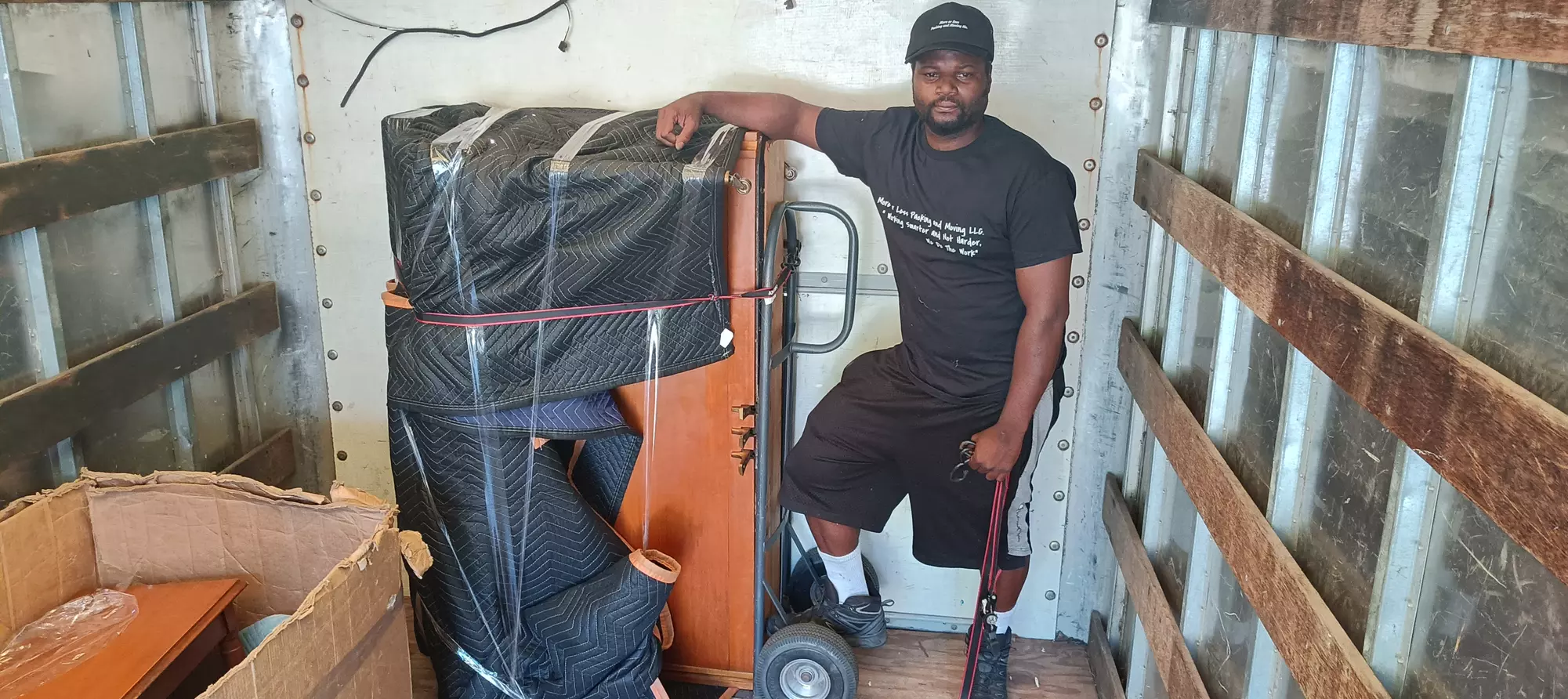Understanding the Inclusions of moving and Freight Forwarding on the planet of Domestic and Global Delivery
Steering via the intricacies of moving and Freight forwarding can be difficult. Both procedures involve distinct treatments and requirements that are vital for successful transport. Comprehending the differences in logistics, documents, and danger administration is essential for individuals and organizations alike. This knowledge can significantly influence the efficiency and safety and security of shipments. Nevertheless, several are not aware of the specific elements that affect the total experience and end results. What variables should one take into consideration to assure a smooth transition?
The Basics of moving and Freight Forwarding
moving and Freight forwarding are essential components of the global logistics industry. They promote the transfer of goods and individual valuables across international and domestic boundaries. moving largely includes the moving of households or individuals, incorporating property and industrial needs. It normally consists of packing, loading, transferring, and unpacking items at the location. On the other hand, Freight forwarding is focused on the delivery of items, commonly wholesale, using various transport settings, such as land.freight, air, or sea forwarders work as intermediaries, working with logistics to ensure prompt distribution while navigating through complex laws and custom-mades procedures. Both procedures require cautious preparation, company, and interaction to guarantee effectiveness and lessen interruptions. Recognizing these basics is essential for anyone included in logistics, as they prepared for advanced facets of shipping and transportation management.
Trick Components of Freight Forwarding Services
Freight forwarding solutions incorporate a number of critical parts that guarantee smooth transportation of goods. Key responsibilities of Freight forwarders include managing logistics, working with shipments, and managing personalizeds clearance. In addition, understanding necessary shipping documents is crucial for compliance and effective movement of cargo.
Freight Forwarder Responsibilities
A reputable Freight forwarder plays an important duty in coordinating the transportation of items, guaranteeing that deliveries are handled successfully and in conformity with regulations. Their responsibilities incorporate different vital jobs, consisting of picking optimal transport routes, negotiating Freight rates, and managing logistics. They act as intermediaries between shippers and providers, making certain that cargo is correctly packaged and identified for secure transportation. Additionally, Freight forwarders track shipments, supplying updates to customers regarding the condition and expected distribution times. They additionally examine and handle threats connected with transportation, recommending insurance options as needed. By helping with interaction and documents, Freight forwarders enhance the delivery process, reducing possible delays and enhancing total supply chain performance.
Shipping Documentation Basics

Understanding Custom-mades Clearance and Documents
Exact paperwork is vital in the custom-mades clearance procedure, as it guarantees conformity with various laws. A summary of custom-mades laws highlights the complexities faced by shippers and Freight forwarders. Typical clearance obstacles can significantly affect delivery timelines and prices, making understanding this aspect crucial for efficient logistics.
Significance of Accurate Documents
Steering with the intricacies of global delivery requires a keen understanding of custom-mades clearance and the critical role of documentation. Accurate paperwork is essential for guaranteeing that deliveries adhere to laws and reach their locations immediately. Correctly prepared files, including bills of lading, industrial billings, and packaging listings, assist in smooth interactions with customizeds authorities. Inaccuracies can result in shipment hold-ups, penalties, or perhaps confiscation of items. Extensive documentation aids in tracking shipments and resolving disagreements. Organizations engaged in moving and Freight forwarding have to prioritize thorough paperwork practices to browse the intricate landscape of worldwide delivery successfully. This persistance not only streamlines operations but additionally boosts customer satisfaction by making certain prompt delivery.
Custom-mades Regulations Introduction
Guiding customs laws is an essential facet of international trade that straight impacts the success of moving and Freight forwarding procedures. Efficient personalizeds clearance requires an understanding of different guidelines, consisting of tariffs, obligations, and import/export restrictions. Accurate documents is vital, as it guarantees compliance with legal requirements and helps with the reliable activity of products throughout borders. Key papers frequently consist of commercial invoices, packing listings, and expenses of lading, which give detailed info concerning the delivery. In addition, customizeds brokers play an important function in steering complicated policies, serving as intermediaries between customizeds and shippers authorities. By maintaining thorough knowledge of customs processes, businesses can greatly lower delays and decrease expenses connected with worldwide delivery.
Usual Clearance Obstacles
Many difficulties can occur during the customs clearance procedure, typically complicating the movement of items across boundaries. One substantial problem wants documentation, which can lead to penalties and hold-ups. Exporters and importers have to assure all needed paperwork, such as billings, packing checklists, and certificates of origin, is exact and total. In addition, discrepancies in evaluation can activate scrutiny from personalizeds authorities, resulting in additional duties or assessments. Language barriers might also present challenges, as miscommunication can bring about misunderstandings pertaining to policies. Moreover, modifications in custom-mades policies can produce confusion, requiring continuous watchfulness by carriers. Ultimately, getting over these clearance challenges needs comprehensive preparation and a clear understanding of custom-mades requirements to assist in smooth global transactions.
Packaging and Identifying Demands
Although typically overlooked, product packaging and labeling needs play an important function in the shipping procedure, ensuring that goods are safeguarded and quickly identifiable throughout their trip. Proper packaging safeguards things from damages throughout transit, while also assisting in effective handling and storage. Using appropriate materials, such as bubble cover, foam, or strong boxes, can stop breakage and loss.Labeling is just as critical. Clear and accurate labels convey critical details, consisting of the destination, dealing with instructions, and materials. Labels should comply with regulations certain to residential and global delivery, which may consist of unsafe products identification or customs declarations.Moreover, standard labeling practices streamline the tracking procedure and enhance total logistics efficiency. By sticking to packaging and labeling needs, businesses lessen the risk of hold-ups, damage, or misdelivery. Eventually, these techniques contribute greatly to the success of moving and Freight forwarding operations, making certain a seamless delivery experience for all events involved
Tracking Shipments: Value and Approaches
Effective packaging and labeling set the structure for effective shipment administration, yet tracking deliveries is similarly essential in the shipping procedure. Delivery monitoring provides real-time exposure, which aids consumers and companies monitor the progression of their goods. This transparency improves consumer contentment, considering that clients can stay notified regarding shipment timelines and any type of potential delays.Several techniques promote reliable monitoring. Barcode scanning is an usual method, utilizing distinct identifiers to monitor plans throughout their trip. In addition, GPS technology enables exact area monitoring, permitting prompt updates and enhanced logistics administration. Several shipping companies now offer digital platforms and mobile applications that supply customers with very easy accessibility to tracking information.The significance of shipment tracking can not be overemphasized; it decreases the danger of lost or harmed products, enhances operational performance, and promotes count on in between carriers and recipients. Incorporating efficient tracking approaches is crucial for effective residential and international delivery procedures.
Insurance policy Options for Your Product

Protecting insurance coverage for goods in transit is a crucial consideration for people and services alike. Insurance alternatives vary based on the kind of shipment, worth of goods, and certain threats included. Usual types include copyright responsibility, which covers loss or damage while in transportation, and full-value insurance, supplying comprehensive coverage for the overall worth of the goods.Shippers may likewise take into consideration aquatic moving and storage companies near me insurance coverage for global shipments, securing versus threats related to sea transportation. It is important to evaluate the certain demands of the delivery and evaluate the terms and conditions of any type of policy.Furthermore, recognizing exclusions and limitations is essential to prevent prospective spaces in insurance coverage. Carriers should involve with insurance policy specialists to explore tailored options that fit their one-of-a-kind scenarios. Ultimately, buying the appropriate insurance policy can mitigate financial risks and offer assurance throughout the delivery procedure.
Selecting the Right moving and Freight Forwarding Service
When choosing a moving and Freight forwarding service, it is important for businesses and people to carefully evaluate their specific demands and top priorities. Aspects such as the volume of goods, destination, and timeline play a considerable role in this decision-making process. Looking into numerous service providers is recommended; comparing their solutions, rates, and client reviews can disclose beneficial insights.Additionally, it is essential to consider the experience and experience of the company in managing specific kinds of cargo, Visit Your URL especially for worldwide shipments that might include customizeds clearance. Openness in prices, consisting of any type of hidden costs, ought to additionally be scrutinized.Furthermore, examining the degree of client assistance provided is important, as timely communication can mitigate issues throughout transit (freight shipping). Lastly, confirming the availability of insurance policy options ensures that items are protected throughout the shipping procedure. By taking these people, businesses and actions can make enlightened choices that align with their logistics demands
Regularly Asked Inquiries
What Sorts Of Item Can Be Shipped Worldwide?

Just How Do Delivery Prices Differ Between Different Carriers?
Shipping prices differ greatly between carriers as a result of elements such as service speed, cargo type, distance, and extra solutions used. Each service provider's rates version mirrors these variables, affecting total delivery costs for clients.
Can I Ship Hazardous Products or Perishables?
Delivering harmful products and perishables goes through stringent laws. Service providers frequently require specific product packaging, labeling, and documents. Carriers should guarantee compliance with international and regional laws to stay clear of fines and assure secure transport.
What Should I Do if My Delivery Is Delayed?
When confronted with a shipment delay, one need to initially call the provider for updates. Evaluate any kind of notices received, assess different solutions, and maintain all parties informed about the scenario to reduce disturbances.
Are There Weight Boundary for Delivery Containers?
Weight limitations for delivery containers vary relying on aspects like container dimension and shipping laws. Typically, common containers have a maximum gross weight of around 30,000 to 32,000 kgs to assure safe transportation and handling. In comparison, Freight forwarding is focused on the shipment of products, frequently in mass, making use of various transportation settings, such as air, land.freight, or sea forwarders act as middlemans, coordinating logistics to ensure prompt distribution while maneuvering with facility regulations and customizeds treatments. Trick responsibilities of Freight forwarders consist of managing logistics, collaborating shipments, and managing personalizeds clearance. A trustworthy Freight forwarder plays an essential role in collaborating the transportation of products, making sure that deliveries are managed successfully and in conformity with laws. Reliable product packaging and labeling established the structure for successful shipment monitoring, but tracking deliveries is just as crucial in the delivery procedure. Lots of shipping business currently offer digital systems and mobile applications that offer individuals with simple accessibility to tracking information.The significance of shipment tracking can not be overstated; it minimizes the threat of shed or damaged goods, boosts functional effectiveness, and fosters trust the professional moving company in between carriers and recipients.